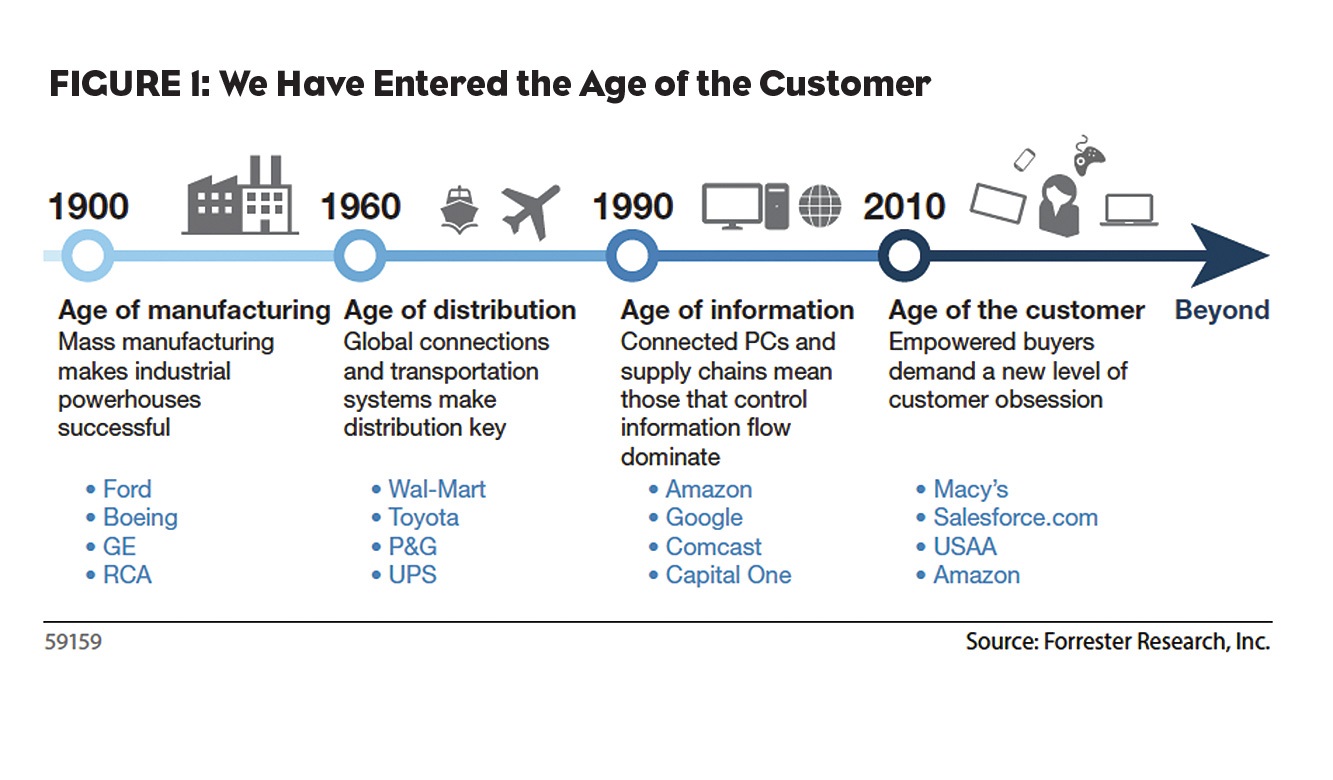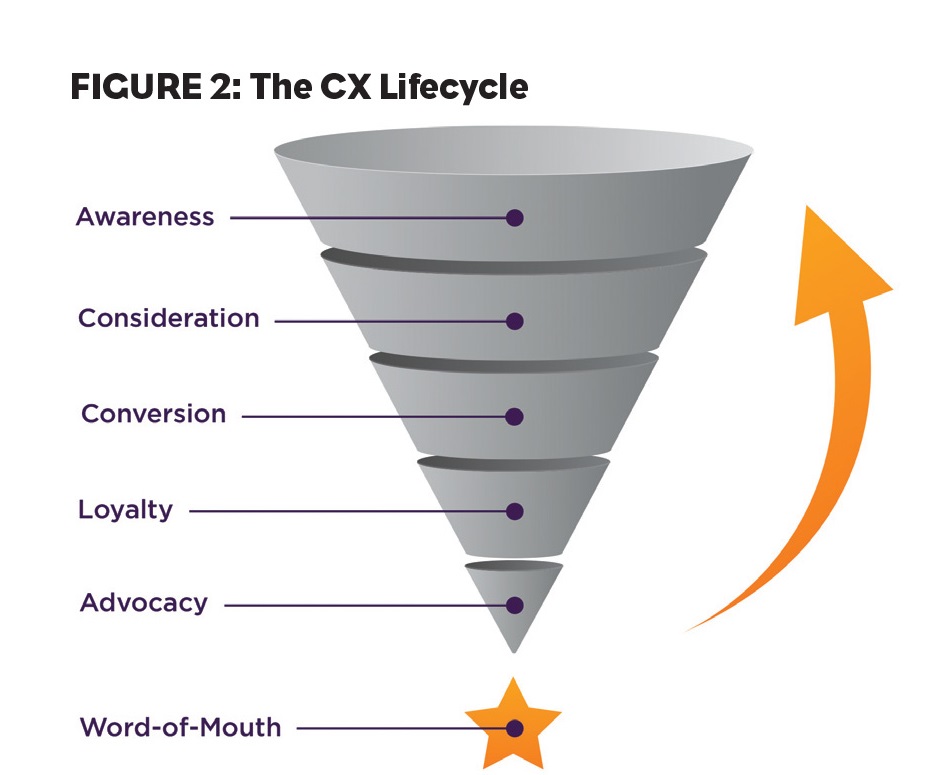Throughout the 1960s and ’70s, one charter fishing boat captain dominated the striped bass industry in the U.S. People would travel from around the world to fish with “Captain Bob” Francis on his boat, the Possessor, in search of 25- to 50-pound striped bass found in the rips and currents off Nantucket Island. Captain Bob was born and raised on this small island, lived there all his life and had developed a sixth sense about the environment and a true vision for the art of fishing. Even when dense fog wouldn’t allow seeing more than five feet in front of you, he could “sense” the fish and predict their behavior. He understood everything about them—where they would go, when they’d be feeding and which lures they’d take. It was this vision that made him a truly great fisherman.
The New Era of Customer Experience (CX)
Customer Experience (CX) Marketing is a new approach to reaching consumers in the healthcare industry. It’s changing the face of marketing communications and having a profound influence on the decision-making process behind the attitudes and behaviors that drive brand usage. Through an understanding of the customer journey (where the fish go), and by identifying the “key moments of impact” when they are most receptive to specific communications (when the fish will be feeding), brands are able to fully engage the target audience and measurably increase the impact of brand messaging (lures the fish will take).
In today’s information sharing age, customers possess more power than ever—through online reviews, social media and mobile access—and many of them know more about different products, services, competitors and pricing than the companies that market and sell them. In fact, they now dictate the conversation around brands and ascribe more weight to other customer reviews and word-of-mouth than they do to any marketing, sales or PR efforts.
It’s Now the “Age of the Customer”
According to Forrester Research, we’ve entered a new era called “the age of the customer”—a time when focusing on them matters more than any other strategic imperative (Figure 1).
Peter Drucker has been quoted as saying, “The customer rarely buys what the company thinks it’s selling him.” It’s not necessarily what we want to hear, but the point he’s making is clear. To be truly effective, we must approach our marketing transactions from the customer’s point of view and deliver more than just the traditional brand-centric “advertising” of features and benefits. We must become the “Captain Bob” of marketing and know our customers so well that we intuitively know when, where and how they want to engage with us and are most receptive to our messages. To be effective and to be truly great, today’s brands need to understand those who purchase their products and establish relationships with them first, and then deliver the brand messages through these relationships, specific to the customer experience (CX).
What Do Customers Want?
As healthcare marketers, we can’t forget that no one typically wants to take the products we promote—they do so only because they feel they have to. In fact, most patients perceive our products as a “necessary evil” (which is why the healthcare industry struggles with such poor patient adherence). To engage patients and healthcare professionals (HCPs), we must focus on their point of view—not ours or the brand’s. In today’s market, it’s the customers who decide if they had a meaningful experience with our brands, and if not, then they may try something else.
So what do customers want? They want to trust brands. They want brands and companies to cater to their specific needs. They want personalized experiences in which their needs are anticipated. They want cutting-edge products (and are always looking for the next best thing), but they also want companies that provide both innovative products and proactive service. They want effortless experiences and consistency across channels—and they don’t want to provide too much information.
And guess what? They want it yesterday. To deliver on these needs, research and communications must be designed to first get to know the customer. They must help them open up, drop their privacy walls, alleviate their concerns and allow us to know them—their likes, dislikes, preferences, needs, what they’re trying to achieve, and more.
Top 5 Questions to Ask Yourself
Every person working on the brand must be thinking about what customers need and want at each stage of the CX Lifecycle (Figure 2), and often, this doesn’t involve brand information:
1. How is it best for customers to first become aware of your brand—through your marketing or advertising efforts, or word of mouth/referrals from a friend, physician, or fellow patient?
2. Once they’re aware of your brand, how does it stack up against others in the customers’ consideration set, including alternate treatment options?
3. Based on the customer’s research and what they find online, how and why will they select and purchase your product or service?
4. Will the initial customer experience (CX) ensure successful trial?
5. If and when customers feel comfortable with the brand experience, and remain adherent to your product, will they truly adopt it as part of their lifestyle and well-being?
Reap the Rewards
The rewards are great, because in today’s informational age (better yet, “sharing age”) nothing is more powerful in acquiring new consumers than the positive experiences of those you already have.
While consumers have always shared their opinions with others, their opinions now have as much, or more, impact on other customers (and HCPs) than anything marketers can communicate. Based on a positive Customer Experience (CX) at each stage of the CX Lifecycle, they will become “influential advocates” (an extension of your sales force), recommending your products and services to their friends and colleagues.
As Annette Franz, a recognized CX industry thought leader, has said, “It takes the right people, the right tools, the right data, the right touch points, the right processes, and the right culture to get the team focused on the Customer Experience (CX).” I say, “Start with the right people, and it’s all downhill from there.”








